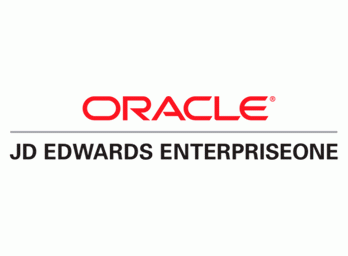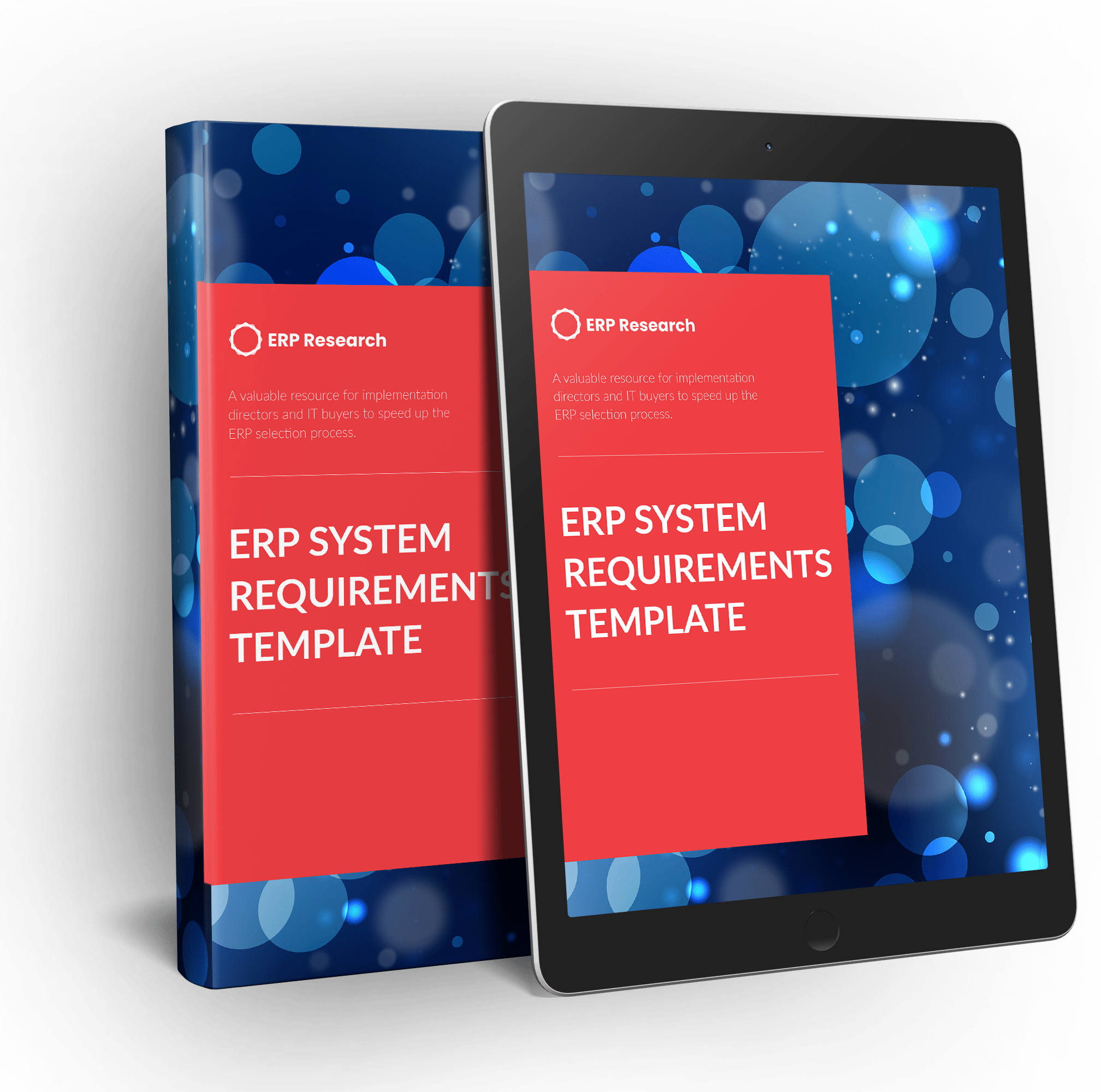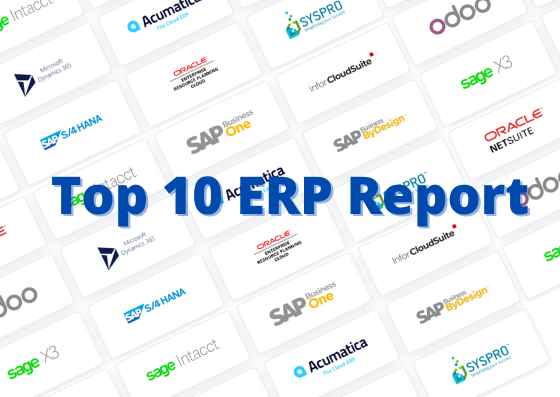
Vendor: Oracle Corporation
Release Date: 2009
500 - 10,000 Employees
$50M-1B+ Revenue
✅ Cloud
✅On-Premise
WHAT IS JD EDWARD ENTERPRISEONE?
-
MODULES & FEATURES
-
PROS & CONS
-
IMPLEMENTATION & ONBOARDING
-
INDUSTRY FIT
-
HISTORY
Modules & Features List
Financial Management
The Financial Management module provides a complete set of tools for managing your finances. It includes a general ledger, accounts payable, accounts receivable, and cash management. You can use the Financial Management module to create financial reports, manage your budget, and track your financial performance. The budgeting tool allows you to create a budget for your entire organization or for specific departments. You can track your budget performance over time and make adjustments as needed. Cash management tools allow you to track your cash balances, manage your accounts receivable and payables, and track your bank account transactions.
The Financial Management module includes a number of features that make it easy to use.
- Accounts Payable
- Accounts Receivable
- General Ledger
- Lease Accounting
- Advanced Cost Accounting
- Joint Venture Management
- Expense Management
- Fixed Asset Accounting
Asset Lifecycle Management
List of some main functions EnterpriseOne offers:
- Capital Asset Management
- Condition-Based Management
- Resource Assignments
- Equipment Cost Analysis
- Real Estate Management
- Advanced Real Estate Forecasting
- Rental Management
Project Management
- Project Costing
- Advanced Job Forecasting
- Contract and Service Billing
- Advanced Contract Billing
- Homebuilder Management
- Change Management and more…
Customer Relationship Management
- Case Management
- Service Management
- Manage customer interactions
- Customer satisfaction measurement
- Targeted marketing campaigns development
- Your customers for targeted marketing segmentation
- Capture complete and accurate customer data
- Understand your customer's needs and preferences
Order Management
- Agreement Management
- Advanced Pricing
- Customer Self Service
- Fulfillment Management
- Sales Order Management
EnterpriseOne allows businesses to quickly and easily capture customer orders from multiple sources, including sales force automation systems, e-commerce platforms, and manual input. and streamlines and automates the order processing workflow, from initial order entry through to final invoice generation as well as coordinates the actions required to fulfill an order, including inventory management, shipping, and invoicing. The module's order tracking feature provides visibility into the status of customer orders across the entire order lifecycle.
Supply Chain Management
- Agreement Management
- Buyer Workspace
- Operational Sourcing
- Requisition Self-Service
- Supplier Self-Service
- Procurement & Subcontract Management
EnterpriseOne includes features and functions highlights such as:
Human Capital Management
- Human Resources Management
- Payroll
- Self Service Human Resources
- Time and Labor
- Applicant tracking
- Benefits administration
- Competency gap analysis
- Competency management
- Compensation management
- Employee requisitions
- Government reporting
- Health and safety
- History and turnover analysis
- Performance management
- Pay grade and step administration
- Reporting tools
- Legislative compliance
Here are just a few of the key features of the JD Edwards EnterpriseOne HCM module:
Manufacturing
- Requirements Planning
- Manufacturing Management
- Configurator
- Quality Management
Features and functions highlights:
- Automatic blanket order releases
- Capacity planning
- Coproducts and byproducts
- Expiration planning
- Forecast consumption
- Integrated with MRP
- Pay on consumption
- Rate-based scheduling
- Single-pass DRP, MPS, and MRP
- Supply/demand inclusion rules
- Select types of lot holds
- Multiple schedule horizons
- Schedule revisions
- Shipping schedule definition
- User-defined time series
- Yields by operation
Some of the key features of the EnterpriseOne Manufacturing module include:
Reporting & Business Intelligence
Pros & Cons
Pros
- Oracle’s JD Edwards EnterpriseOne can help you reduce your overall costs by automating key business processes.
- EnterpriseOne includes a powerful customer relationship management (CRM) system that can help you improve your customer service. The software helps businesses manage their customer data, track customer interactions, and create a 360-degree view of their customers.
- EnterpriseOne includes a number of features and functions that can help you increase your operational efficiency.
- JD Edwards EnterpriseOne also offers excellent scalability. As your business grows, the platform can be easily expanded to accommodate new users and new functionality. This scalability can help you avoid the costly process of upgrading your existing software solution.
- The software is available in a number of different languages, so that users can choose the language that best suits their needs.
- This may be an important consideration if you have limited IT resources or if your employees are not particularly tech-savvy.
- Oracle's JD Edwards EnterpriseOne software comes with 24/7 customer support
Cons
- Oracle's JD Edwards EnterpriseOne software is typically more expensive than most of the ERP solutions in the market. However, it is important to understand that the initial cost is not always the most important factor. You need to consider the upfront costs, such as licenses and training, as well as the ongoing costs, such as maintenance and support.
- This system is designed for medium and larger businesses, and it may not be as flexible as you need it to be for small companies.
- This platform can be complex and challenging to learn and use. If you don't have experience with enterprise software solutions, you may find the learning curve to be steep.
Implementation & Onboarding
When it comes to ERP enterprise software, there are few more important considerations than implementation and onboarding. After all, even the most feature-rich and user-friendly software is of little use if it's not properly installed and configured for your specific needs. That's why, when you're evaluating enterprise software solutions, it's important to ask about the implementation process and what kind of support is available.
Here's a quick overview of what you need to know about implementing and onboarding for EnterpriseOne. Implementation The first step in implementing an ERP solution is to select the right implementation partner. This is a critical decision, as your implementation partner will be responsible for ensuring that the software is properly installed and configured for your specific needs.
Installing and using JD Edwards EnterpriseOne is a simple and straightforward process. The software can be installed in a matter of minutes, EnterpriseOne is designed to be intuitive and easy to use, so users will be able to get the most out of the system from the start. There are several ways to implement the solution, depending on the needs of your business. The software can be installed on-premise or in the cloud, and there are a number of different implementation options to choose from. If you're not sure which implementation option is best for your business, we can help you make the right decision. Once you have decided on an implementation option, the team will work with you to ensure that the software is installed and configured correctly. Depending on the size and complexity of your organization, you can expect to be up and running in just a few days/weeks.
If you choose to do it yourself, EnterpriseOne’s team of experts can help you every step of the way. EnterpriseOne team will provide training and support to help you get the most out of the system. The company's certified consultants will work with you to ensure that the software is installed correctly and that all of your organization's data is properly migrated. They will create a customized training program that will teach your team how to use the software to its full potential.
During the onboarding process, you can also find a wealth of resources, including user guides and how-to videos, on the official website.
Industry Fit
Oracle's JD Edwards EnterpriseOne ERP also offers a broad range of industry-specific solutions that can be used to address the specific needs of each industry. The software helps businesses drive growth and improve their competitive position by providing a complete and integrated set of ERP capabilities. The software is designed to provide a high degree of flexibility and scalability, so that it can be easily customized to meet the changing needs of any organization.
JD Edwards EnterpriseOne provides a rich set of features and functionality that can be tailored to the specific requirements for the following business:
- Automotive
- Communications
- Construction and Engineering
- Consumer Goods
- Energy and Water
- Financial Services
- Food and Beverage
- Government and Education
- Health
- High Technology
- Hospitality
- Industrial Manufacturing
- Life Sciences
- Media and Entertainment
- Oil and Gas
- Professional Services
- Retail
- Travel and Transportation
- Wholesale Distribution
History
The company was founded 1977 in Colorado, USA -- by Dan Gregory, Jack Thompson and Ed McVaney, under the name of “J.D. Edwards World Solution” offering Enterprise Resource Planning Software (ERP).
Initially Software was sold as “JD Edwards WorldSoftware” in 1999 company launch a software which was rolled out as “JD Edwards OneWorld” it was platform independent client Server system with a graphical interface and distributed computing client service solutions, and it quickly became the leading enterprise software solution on the market which increased JDE customer from 48 to 600.
The solution has undergone several merger and acquisition activities, as well as been revamped to include new features and functionality. Oracle Corporation acquired JD Edwards in 2005, and has since invested heavily in the development of the JD Edwards EnterpriseOne system.
The latest version of JD Edwards EnterpriseOne was released in 2009 when Oracle stepped into version 9’s, and includes a number of new features and functionality that keep it up-to-date with the latest enterprise software trends. Current release of EnterpriseOne latest release E1 9.2 has been standard since 2017.
In the years since, the company has acquired or merged with several other enterprise software vendors, and the software has continued to evolve and grow into the robust solution it is today.
Today, JD Edwards EnterpriseOne is widely recognized as the most complete and robust enterprise software solution available. It is used by some of the largest and most successful companies in the world, and it has a proven track record of helping businesses achieve their goals.
JD Edwards EnterpriseOne is a complete and powerful ERP solution that can help your business improve its bottom line. It offers a wide range of integrations that allow businesses to connect JD Edwards EnterpriseOne to other applications and systems
JD Edwards EnterpriseOne deployment options,
Languages & Support
In this section we will cover the deployment options, languages and support available in JD Edwards EnterpriseOne.
Deployment
✅ Cloud
✅ On-Premise
Languages
Oracle’s JD Edwards EnterpriseOne supports more than 28 languages and 180 currencies worldwide.
Support
✅Help Desk✅Knowledge Base
✅FAQs/Forum
✅Email/Live Chat
The user interface (UI) for JD Edwards EnterpriseOne 9.2 is intuitive and easy to use. The new features and enhancements in 9.2 help users be more productive and efficient in their everyday tasks. The software's user interface (UI) is designed using the Microsoft .NET platform and provides users with a straightforward and easy-to-use interface to give users quick and easy access to the information and dashboard-driven user interface for 100 or more than 10,000 users.
JD Edwards EnterpriseOne is very scalable and runs on multiple operating systems (Microsoft Windows, Linux, AIX, IBM I5OS) and Virtual Servers (Oracle VM and VMware).
Here's a quick overview of the UI changes in 9.2. Application Navigator:
EnterpriseOne’s application navigator has been redesigned in 9.2 to provide a more intuitive and efficient way to access the tools and information you need. The new design includes a search bar, Favorites, and Recent Items. The Favorites section is a great way to quickly access the tools and information you use the most.
The JD Edwards EnterpriseOne UI is built around a central "home" screen that provides users with an overview of the most important information and tasks they need to complete. The user interface is based on a model-view-controller approach that separates the data model from the view and the controller logic. This separation makes it possible to customize the user interface without affecting the data model. The user interface consists of a number of different types of screens. The Home screen is the first screen that is displayed when you log into JD Edwards EnterpriseOne.
The Home screen provides you with a quick way to access the most commonly used functions in JD Edwards EnterpriseOne. From the Home screen, you can access the Navigator, which is used to navigate to other screens in JD Edwards EnterpriseOne. The Navigator is a hierarchical menu system that organizes the functionality in EnterpriseOne into a series of menus and sub-menus. The Navigator organizes the functionality in EnterpriseOne into logical groupings called task views. Each task view contains a set of related screens.
For example, the task view for Accounts Payable contains screens for entering invoices, payments, and reports. The task view concept enables you to quickly find the screens that you need to perform a task. To access a task view, you select the task view from the Navigator menu. The task view that you select determines the set of screens that are displayed. The screens in JD Edwards EnterpriseOne are organized into a series of tabs. The tabs are used to group related screens together. Users can access all of the software's features and functions, including financials, manufacturing, human resources, and customer relationship management. The software's intuitive navigation and task-based approach make it easy for users to find their way around and get the job done quickly and efficiently.
JD Edwards EnterpriseOne 9.2 is easy to use and helps users be more productive. The new features and enhancements make it even easier to find the tools and information that simplifies business processes and provides greater visibility into information.
Oracle’s JD Edwards EnterpriseOne Mobile Platform
Application Navigator UI enhancements include a new look and feel for the application, responsive design, improved performance, and better support for touch devices. EnterpriseOne uses Oracle’s Mobile Platform to provide enterprise mobile solutions to enterprises. Clients can access their data from remote locations using Android, iOS and other mobile devices. Apps are available in the Apple App Store and Google Play.
.webp)
.webp)
.webp)
.webp)
.webp)
.webp)
.webp)
What is JD Edwards EnterpriseOne?
Oracle’s JD Edwards EnterpriseOne is built on a modern architecture that is modern, scalable, and flexible. EnterpriseOne provides more than 80 modules of enterprise resource planning (ERP) capabilities, including:
- Finance and accounting
- Manufacturing
- Supply chain management
- Project management
- Customer relationship management
- Project management
- Logistics
- Human capital management
- Order Management
- Health & Safety
- Supply Management
And more…
Is Oracle JD Edwards EnterpriseOne right for my business?
It depends on the needs of your business. If you're not sure which implementation option is best for your organization, we can help you make the right decision.
What are the benefits of using Oracle JD Edwards EnterpriseOne?
JD Edwards EnterpriseOne helps organizations improve their operational efficiency and business performance by providing a complete set of ERP, CRM, and SCM applications in a single, integrated solution. Oracle JD Edwards EnterpriseOne also delivers a significant return on investment (ROI) by providing a low total cost of ownership (TCO) and rapid time to value.
There are many benefits to using Oracle JD Edwards EnterpriseOne, including:
Reduced total cost of ownership: EnterpriseOne is a highly efficient software suite that can help businesses reduce their overall IT costs.
Increased agility and flexibility: The software is designed to be easily configurable to meet the changing needs of businesses. It can also be seamlessly integrated with other Oracle and third-party applications.
Improved business insights: the Software provides businesses with comprehensive data visibility and real-time analytics, helping them to make better-informed decisions.
Enhanced customer experiences: EnterpriseOne includes powerful customer relationship management and e-commerce features that can help businesses improve their customer interactions.
What programming language is used in JD Edwards EnterpriseOne?
Several EnterpriseOne components are based on Java and deployed to run within Java runtime environments.
Who uses Oracle JD Edwards EnterpriseOne?
Oracle;s JD Edwards EnterpriseOne is used by organizations of all sizes across multiple industries.
What are the benefits of using Oracle JD Edwards EnterpriseOne?
Oracle JD Edwards EnterpriseOne helps organizations improve business processes, lower costs, and make better decisions by providing comprehensive transaction and analytic capabilities in a single suite of software.
Why should my company consider Oracle JD Edwards EnterpriseOne?
EnterpriseOne provides a modular based and fully integrated ERP solution that helps companies streamline their core business processes, improve operational efficiencies, and make better decisions. In addition, It offers a high flexibility and customization, allowing companies to tailor the software to meet their specific business needs.
How is Oracle JD Edwards EnterpriseOne different from other enterprise resource planning software?
EnterpriseOne is a modern and fully integrated applications suite that provides comprehensive ERP functionalities in one single solution unlike some other enterprise resource planning software suites that typically require the purchase of multiple software products from different vendors to get the same functionality.
What languages does Oracle JD Edwards EnterpriseOne support?
EnterpriseOne supports more than 28 languages.
What platforms does Oracle JD Edwards EnterpriseOne run on?
Oracle JD Edwards EnterpriseOne runs on a variety of platforms, including Windows, Linux, Solaris, IBM AIX, and HP-UX.
How easy is it to use Oracle JD Edwards EnterpriseOne?
The software includes a wide range of helpful features and tools, such as an intuitive user interface, context-sensitive help and offers a number of online resources, such as video tutorials and user guides, to help users learn the software.
In addition, there are a number of community resources, such as the Oracle JD Edwards EnterpriseOne Forum, where you can find helpful tips, tricks, and advice from other Oracle JD Edwards EnterpriseOne users.
How much does Oracle JD Edwards EnterpriseOne cost?
The cost of EnterpriseOne depends on several factors, including the size of the company, the number of users, the level of customization, and the specific industry requirements. We can provide you with the best comparison and analysis of the product.
JD Edwards EnterpriseOne Pricing
Get a JD Edwards EnterpriseOne quote today.
JD Edwards EnterpriseOne Demo
Get a EnterpriseOne demo, personalized to your requirements.






